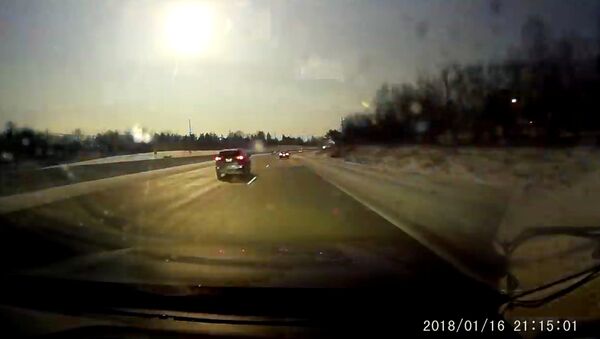Moments after the meteor flew across the region around 8 p.m. local time, the National Weather Service confirmed that it caused a "magnitude 2.0 earthquake." The United States Geological Survey later indicated the quake was centered roughly five miles west-southwest of New Haven, Michigan.
But according to John Bellini, a geophysicist at the National Earthquake Information Center, this wasn't a traditional earthquake that Michiganders felt. In fact, it was the meteor's boom, aka its sound waves, that triggered the rumblings and led to the seismometer recording the 2.0 quake, he told Live Science.
However, the measurement doesn't exactly indicate the energy that the meteor released.
"There's no way to translate the actual energy from an air blast into seismometers," Bellini told the outlet. "They're not designed to measure vibrations coming from the air."
— #CreativeMich (@CreativeMich) January 17, 2018
Though officials were initially unsure of what caused the great shake of 2018, the National Weather Service and the National Aeronautics and Space Administration (NASA) later confirmed the culprit in the situation.
"After reviewing several observational datasets, the NWS can confirm the flash and boom was NOT thunder or lightning, but instead a likely meteor," a tweet from the agency stated. "We continue to monitor feeds from astronomical agencies for official confirmation of a meteor."
Bill Cooke, an official with NASA's Meteoroid Environment Office, told The Detroit News that the phenomenon was "definitely a meteoroid."
— David Fry (@frydave) January 17, 2018
According to the American Meteor Society, aside from Michigan, the meteor was also visible in Wisconsin, Illinois, Indiana, Ohio, Pennsylvania and even in Canada. The society later concluded that it was a "slow moving meteor" traveling at a speed of 28,000 mph.
This isn't the first time that a meteor's power has been registered on a seismograph. In 2013, the Chelyabinsk meteor that flew across Russian skies on February 15 registered as a magnitude 4.2 earthquake, Live Science reported.

